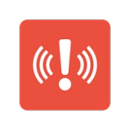 Fallen? Can’t get up? You might need Life Call. But if your job puts you in risky situations, SafeSignal may be a better bet.
Fallen? Can’t get up? You might need Life Call. But if your job puts you in risky situations, SafeSignal may be a better bet.
The product combines a mobile app and a physical tether that users plug into the headphone jack of their phones. Yank out the tether and the phone summons help with an audible alarm and a distress signal to a monitoring service that coordinates a response from law enforcement.
The three-year-old company behind the tool is
, whose other products are designed for multichannel mass communications and event monitoring for operations and emergency teams within large organizations such as AT&T, DHL and Volkswagen.Answering the call
 Founder and CEO Brian Cruver (pictured left) explained that the company’s clients were complaining that employees in dangerous situations didn’t have an easy way to send distress signals quickly. The mobile devices they carry are usually passcode protected to safeguard sensitive data, making it difficult to access them in a tense situation.
Founder and CEO Brian Cruver (pictured left) explained that the company’s clients were complaining that employees in dangerous situations didn’t have an easy way to send distress signals quickly. The mobile devices they carry are usually passcode protected to safeguard sensitive data, making it difficult to access them in a tense situation.
“We started working on a better solution about a year ago,” Cruver said. “Any call-for-help app requires tapping and swiping about eight times.”
Instead, Cruver’s team built an app that would contact AlertMedia's all-hours monitoring service, even from a locked phone, when the device loses its connection with the tether.
The phone begins sending continuous GPS updates to AlertMedia, who relays the user’s location and direction of movement to law enforcement so they can intercept a victim and his or her attacker — even if the victim’s being chased.
Meanwhile, AlertMedia’s software listens for a cancellation code, giving the user a grace period for false alarms just like a home security system.
“It’s the safety confidence we give that we’re really excited about,“ Cruver said. ”A lot of employers have trouble with turnover due to workers’ stress about safety. We’re alleviating a lot of that here.”
‘Not a big brother thing’
AlertMedia only listens for distress signals from devices when client companies' employees initiate monitoring sessions from the SafeSignal app. That means the company doesn’t spy on users around the clock, but collects specific data as long as users need.
That may seem like a major shortcoming in a product intended to call for help at a moment’s notice. But Cruver said it hasn’t come up.
“For most customers, the monitoring session time is obvious,” he said. “A worker is heading into a dark parking lot, or walking up a driveway where a party is happening. We stop short of telling customers to make monitoring sessions mandatory protocol, but most of them do anyway.”
(Highly) personal safety
SafeSignal supports iOS and Android, and AlertMedia reports using the technology to assist law enforcement in “several hundred” incidents during the product’s stealth release last year.
While AlertMedia’s clients are organizations with anywhere from 50 to 1,000 employees and beyond, SafeSignal has clear relevance for private citizens as a sort of Life Call for the modern, mobile user. Asked if a consumer version of the product is in the works, Cruver was bullish.
“Oh yeah,” he said. “We’re also thinking about Uber, bus and cab drivers.”
Have a tip for us or know of a company that deserves coverage? Email us a tip.




